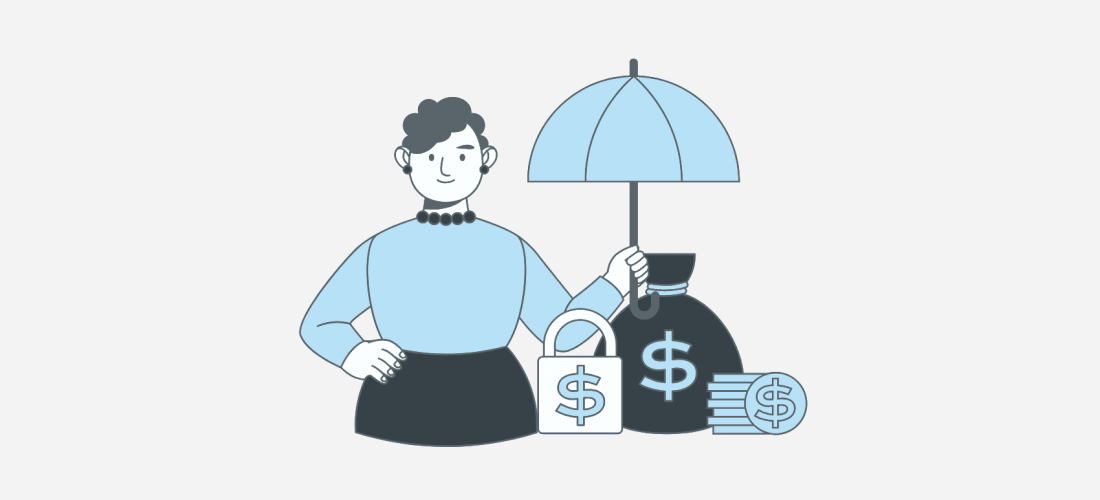The reality of the Swiss system: a balance under strain
The Swiss pension system, with the OASI, the occupational pension (LPP) and the third pillar (pillar 3a or 3b), is built on a simple principle: sharing the risks between the state, the employer, and the individual. Today, however, that balance is weakening. The OASI faces a demographic imbalance — there are more retirees and fewer active workers. The LPP, meanwhile, depends on market returns and on declining technical and conversion rates. The result: what once seemed “guaranteed” no longer truly is.
By combining OASI + LPP, most Swiss retirees receive around 60% of their final income — and that’s simply not enough to maintain the same standard of living. Private pension planning therefore becomes your only real lever to fill this gap, reduce your taxes, and keep control over your financial future.
Before age 30: laying the foundations
Before age 30, it’s not about saving a fortune or calculating your future pension down to the cent. The key is to understand the system and lay the foundation early. Opening a pillar 3a account as soon as possible is a simple but decisive step. Even small amounts, invested regularly, benefit from a long investment horizon and the compounding effect of returns. For a young investor, a fully fund-based solution can be considered — depending, of course, on their risk profile.
The pillar 3b remains an option for more flexible investments, without a strict tax framework. If you don’t yet have a family or major financial responsibilities, a bank-based pillar 3a is usually sufficient. However, an insured pillar 3a offers additional protection: in the event of an accident or illness leading to a loss of earning capacity, the insurance may provide an income or activate a premium waiver — meaning it will continue saving on your behalf. These early years are when capital must be built. If one day you are unable to work, you will no longer be able to save and will depend solely on the OASI, the LPP or the LAA — and therefore on very limited income.
From 30 to 40: implementing a strategy
Between ages 30 and 40, your situation begins to stabilize: income increases, your career takes shape, and major expenses (housing, family, debts) become more predictable. This is the ideal time to start planning your retirement seriously. Time is still on your side, and every franc invested now will work for you over the next two to three decades. The pillar 3a should become an annual habit, not a last-minute option at the end of the year.
At this stage, you can go further: compare the returns of your pension fund (LPP), consider BVG/LPP buy-backs to reduce taxes, and diversify the 3rd pillar according to your profile. A more dynamic portfolio, with a portion in funds or equities, is justified if the horizon remains long. The aim is no longer simply to “put money aside”, but to make the most of it. capital growth.
The 30s and 40s are when everything comes into play: financial discipline, clarity of priorities, and the awareness that the Swiss system will not be enough to guarantee your standard of living. This is the time when you stop “thinking about retirement” and start building it.
After 45: regaining control
After age 45, Retirement is no longer a distant concept. It's becoming a concrete deadline. You can't always make up for the mistakes of youth, but there's still time to regain control. Visit revenues are often at their maximum, children are more independent, and financial visibility is better. Now is the time to adjust strategy and fill any gaps.
The priority: reduce debt and maximize profits 3rd pillar contributions. Visit BVG/LPP buy-backs become a powerful tool for reducing the tax burden while increasing future income. At this age, the focus is less on performance and more on solidity. balance between safety and performance, depending on the retirement horizon.
It's also a good time to take stock: how much have I really accumulated? What pension can I expect from the AHV and BVG schemes? If the result is below my desired standard of living, it's better to know now than in ten years' time. Being clear-headed at 45 avoids regrets at 65.
60: optimizing your later years
From age 60, Financial planning becomes a matter of fine-tuning. The big decisions have been made, the capital has been built up, but now it's a matter of deciding how to go about it. transform this heritage into a stable, tax-efficient income. These last years before retirement require rigor, not risky gambling.
The time has come to gradually reduce the proportion of equities and to steer investments towards greater stability. The objective is no longer capital growth, but preservation of purchasing power and security of future income. At the same time, you need to plan your withdrawal from the 2nd pillar (LPP): annuity, capital or combination, and organize your exit from the 3rd pillar (LPP). step by step to limit the tax burden. Depending on the canton, spreading the payment over several years can considerably reduce the tax burden. Visit semi-retirement can also offer an interesting compromise: maintaining partial activity while lightening the pace and testing the new financial reality.
It's also a good time to review the essentials: health cover, post-retirement taxation, inheritance and any mortgages. The objective is clear: secure your assets, stabilize your income and anticipate future needs. Masterful planning at this stage ensures that every franc accumulated really does serve your comfort and independence.
Conclusion
Retirement planning is not a question of age, but of conscience. In Switzerland, the system remains solid, but it no longer guarantees the same level of comfort as in the past. AVS and LPP cover around 60 % of final income, provided you have a full and uninterrupted career. The rest is up to you: your discipline, your strategy and when you decide to act.
Before the age of 30, you need to understand and get started. Between 30 and 40, build. After 45, adjust. And from age 60, secure. Each stage has its own logic, but all are based on the same idea: don't suffer, choose.
The earlier you start, the more control you have over your future. And when it comes to retirement, control is worth more than hope.
Our pension advisors will work with you to define a strategy tailored to your profile, your goals and your life horizon. Together, we can turn your retirement planning into a clear, concrete and worry-free project.
Frequently asked questions
As soon as possible. Ideally, from your first job. By opening a Pillar 3a early, you can benefit from capitalization over several decades. Even small amounts invested regularly make a real difference over the long term.
The early retirement is prepared at least 10 to 15 years in advance. Retirement before the legal retirement age means a reduction in AHV and BVG pensions, as well as a significant loss of income if private savings are insufficient. The earlier you take the decision, the more scope you have to compensate for these losses, in particular by increasing Pillar 3a payments or making targeted BVG purchases.
In a nutshell: if you're planning to retire at 60, start planning at 45-50 at the latest.
The differences between 3a and 3b are as follows:
On average, the’AVS and LPP cover about 60 % of your last income. This rate varies according to the length of your career in Switzerland, your salary and the performance of your pension fund. To maintain your standard of living, the 3rd pillar or other private investments are essential.
It all depends on your situation.
- Annuities offer lifelong security, but no flexibility and no inheritance.
- Capital gives more freedom, but requires good management.
Often, a combination of the two is the most balanced solution.
Several levers are available:
- Open several 3a pillars to make withdrawals over several years.
- Buying back BVG years no later than 3 years before departure to reduce taxable income.
- Planning where to live (some cantons are more tax-efficient when you retire).
Historically, equity investments have delivered higher long-term returns than so-called “safe” assets such as bonds or savings accounts. If you have more than 15 to 20 years before retirement, allocating a portion to equities is often recommended to generate stronger returns.
The key is to adjust the allocation to your risk profile and gradually reduce the equity portion as you approach retirement.
With an insured 3a, the saver is protected: in the event of accident or illness resulting in disability, the insurer takes over - paying an annuity or waiving premiums, i.e. contributions continue without you having to pay them. In contrast, a bank 3a policy does not cover this risk.
Yes, but only if you continue to work. AVS, LPP and 3rd pillar contributions can be continued within certain limits. This makes it possible to slightly increase your future pension and defer the 3a tax.





